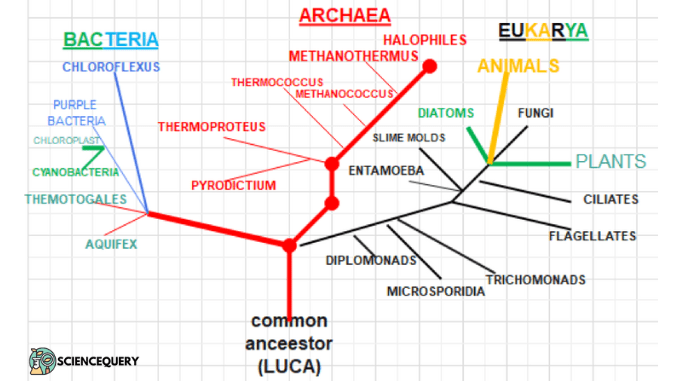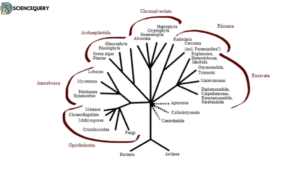
Know in one minute about the Classification of life
|
Introduction
Classification is the scientific approach & procedure of arrangement of living organisms into different groups. Classification of life is mainly done on the basis of their similarities and dissimilarities or according to their natural relationship to each other.
Taxonomists (A biologist who groups organisms into categories) maintain a hierarchy of categories for these groups.
Carolus Linnaeus also known as the “Father of Taxonomy” was the pioneer in the work of classification of life. However, he classified all living organisms into two general groups – Plantae & Animalia.
This is a quite simple & inadequate approach but a huge leap towards the process of classification of animals. Afterwards, several changes were made to improve the process but the plant & animal kingdom remained the same.
Early attempts at organizing living organisms
Aristotle made an earlier attempt to classify all the kinds of animals in his History of Animals (Historia Animalium in Latin).
- Classified animals according to their similarities: animals with blood and animals without blood, animals that live on water, and animals that live on land.
- He assumed that creatures could be grouped in order from lowest to highest, with the human species being the highest.
- So it has become a hierarchical way of classification but it definitely has a lack of scientific approach.
One of the students of Aristotle, Theophrastus (372-287 BC) continued the work of classification of plants started by his teacher and later he was known as the “father of botany.”
Andrea Cesalpino (1519-1603) was an Italian physician who created one of the first new systems of classifying plants since the time of Aristotle. He was a professor of materia medica, the study of the preparation of medicines from plants, at the University of Pisa.
Linnanus and binomial nomenclacure influence
Linnaeus (1707-1778) published his work as a young man in 1735. The System of Nature (Systema Naturae) is notable for an overall framework of classification that organized all plants and animals from the level of kingdoms all the way down to species.
Linnaeus followed this work with The Genera of Plants and The Species of Plants. Plant classification based on the structure of flower parts, in which he was influenced by Cesalpino.
The system of binomial nomenclature. As the name suggests, this system of naming consists of two words for each organism. The first word is the name of the genus, while the second word is the species.
Taxonomy and systematic advancements
- Taxonomy (which literally means “arrangement law”) is the science of naming and grouping species to construct an internationally shared classification system.
- The taxonomic classification system (also called the Linnaean system after its inventor) uses a hierarchical model.
- A hierarchical system has levels and each group at one of the levels includes groups at the next lowest level. So that at the lowest level, each member belongs to a series of nested groups.
- For example, in the most inclusive grouping, scientists divide organisms into three domains: Bacteria, Archaea, and Eukarya.
- Within each domain is a second level called a kingdom. Each domain contains several kingdoms.
- Within kingdoms, the subsequent categories of increasing specificity are phylum, class, order, family, genus, and species.
However, according to the systematics advocated by Carl Linnaeus, the system categorizes living organisms based on their evolutionary relationships and shared characteristics. Which comprise of 7 taxonomic ranks from general to specific as mentioned below,

** The first rank “domain” is introduced later**
Why classification in biology is important
The need for the classification lies in its core biological impotence. Gives biologists a clear understanding of any living organisms. Also helps in the identification, its position in the animal or plant kingdom, origin and evolution, and relationship with others
- Organizing the biodiversity
Taxonomic organization is a hierarchy so that each group of living things is classified within progressively larger groups or categories, until the last group encompasses all life on Earth. In addition to systematically organizing all known organisms.
- Understanding the evolutionary lineage
All organisms are related to the pre-existing life on Earth. It was a gradual change that occurred due to the pressure created by nature evolving a new set of creatures. So to understand these changes & also understanding the relationship among these organisms can be done by the way of classification & also by hierarchical placements.
For example: Relationship between reptiles & birds.
- For easy communication in the scientific world
The classification system proposed by “C. Lineaus” has a specific way of naming a creature, known as binomial nomenclature. In which the scientific name of a creature can be taken as a genus name & species name subsequently. Like, (genus) Panthera (species) tigris (scientific name of tiger.
This gives little room for any type of ambiguity in scientists to identify an organism all over the globe & share it within their community.
- Hierarchical system of classification
This gives a very easy-to-read approach to the classification of organisms. Also, we can locate a particular organism in a phylogenetic tree very easily. Most of all organisms can be divided on the basis of their physical & anatomical characteristics and we can easily identify them.
Three domains of life
There are three domains of life
- Eukaryotes
- Prokaryotes
- Archaea.
These three domains of life have had the most amount of time to evolve, and have been responsible for shaping the world we live in today.
The three-domain system is a way of classification first demonstrated by Carl Woose, Otto Kandler & Mark Wheelis in 1990.
For the division of all cellular life forms into the three domains mentioned above. This approach was needed as in previous attempts of classification microorganisms had escaped any attempts.
According to scientists, all these diverse organisms originate from a common ancestor named as “LAST UNIVERSAL COMMON ANCESTOR”.
In the above phylogenetic tree, we can see the evolutionary relationship among the organisms of these three domains.
Archaea
General characteristics
- These are one of the most primitive life on earth present for a long time.
- The general characteristics of this domain are
- Single-celled organism.
- Exclusively prokaryotic type of cell,i.e. Doesn’t have a distinct membrane-bound nucleus.
- Genetic material is DNA associated with proteins on chromosomes.
- Introns present (The term intron refers to both the DNA sequence within a gene and the corresponding sequence in RNA transcripts)
- Cell wall noncellulosic but different from eubacteria.
- The mode of nutrition is heterotrophic or chemoautotrophic ( An autotroph that is capable of synthesizing complex organic materials from inorganic reactions (e.g. iron oxidation or from CO2).
- Presence of solid flagella or cilia.
Diversity of domain archaea
- Archaea were on Earth long before multicellular life appeared.
- These first organisms were adapted to very high temperatures and withstand harsh conditions.
- They thrive in a vast array of environments. Sometimes under those conditions plants and animals can not survive.
- Organisms are present in both freshwater and marine water. The diversity of known archaea has expanded from 2 to about 30 phyla comprising over 20,000 species.

 Fun Facts:
Fun Facts:
Archaea- Organisms that like extreme conditions are called “extremophiles,” and Archaea are some of the best. Certain species of Archaea live in solutions that are more acidic than vinegar. Others survive in environments that are as basic as ammonia. They also can tolerate & thrive in high temperatures.
Bacteria
General characteristics
- Unicellular & prokaryotic.
- Double-stranded circular DNA is present in nucleoids.
- Bacteria also have a cell membrane and a cell wall of peptidoglycan. Together, know as envelope.
- Reproduction occurs through binary fission, which is the splitting of a bacterial cell after it reaches a certain size. Bacteria reproduce asexually, so the two daughter cells that result from binary fission have the same DNA as the parent cell.
Adaptations of bacteria
- Bacteria have been designed to be adaptable. Their surrounding layers and the genetic information for these and other structures associated with a bacterium are capable of alteration.
- Resistance is an example of the adaptation of the bacteria to the antibacterial agent.
- Antibiotic resistance can develop swiftly. Like resistance to penicillin.
- As of the mid-1990s, almost 80% of all strains of Staphylococcus aureus were resistant to penicillin.
- Bacteria adapt to other environmental conditions as well. These include adaptations to changes in temperature, pH, and concentrations of ions such as sodium.
- And the nature of the surrounding support. An example of the latter is the response shown by Vibrio parahaemolyticus to growth in a watery environment versus a more viscous environment.
- Another adaptation exhibited by Vibrio parahaemolyticus, and a great many other bacteria as well, is the formation of adherent populations on solid surfaces. This mode of growth is called a biofilm. Adaption of a biofilm mode of growth induces a myriad of changes.
- A further example of adaptation is the phenomenon of chemotaxis, whereby a bacterium can sense the chemical composition of the environment and either move toward an attractive compound or shift direction and move away from a compound sensed as being detrimental.
Eukarya
General characteristics
- Relatively advanced organisms with membrane-bound cell organelles.
- The nucleus is well-organized & covered by the nuclear envelope.
- It has mitochondria (the house of the cell).
- The cell is dividing by the process of mitosis.
Diversity of domain eukarya
Eukaryotes or taxon Eukarya or Eukaryota. They are split into 6, subdivisions, referred to as kingdoms. They are
1. Excavata – Various flagellate protozoa.
2. Amoebozoa – Most lobose amoeboids and slime molds.
3. Opisthokonta – Animals, fungi, choanoflagellates.
4. Rhizaria– Radiolaria, and various other amoeboid protozoa.
5. Chromalveolata– Haptophyta, Cryptophyta (or cryptomonads), and Alveolata.
6. Archaeplastida– Land plants, green algae, red algae, and glaucophytes.

Complexity of domain Eukarya
- All the life we see each day including plants and animals belongs to the domain, of Eukaryota.
- It has the most developed & complex organisms.
- Eukaryotic cells are more complex than prokaryotes, and the DNA is linear and found within a nucleus.
- Eukaryotic cells have their own personal “power plants”, called mitochondria. These tiny organelles in the cell not only produce chemical energy but also hold the key to understanding the evolution of the eukaryotic cell.
- The complex eukaryotic cell ushered in a whole new era for life on Earth because these cells evolved into multicellular organisms.
- They have a unique way of cell division – Mitosis.
- Organisms of this domain present from simple single-celled paramoecium sp to the height of complexity in humans.
 Fun Facts:
Fun Facts:
Paramecium bursaria, a single-celled eukaryote that swims around in pond water, may not have its own chloroplasts, but it does manage to “borrow” them in a rather unusual way. They swallow photosynthetic green algae, When P. bursaria swims into the light, the algae photosynthesize sugar, and both cells share lunch on the go.
Q&A
1. What are the 7 classifications of life?
Kingdom — Phylum — Class — Order — Family — Genus — Species.
2. What are the 8 classifications of life?
Doamin — Kingdom — Phylum — Class — Order — Family — Genus — Species
3. What are the 5 classifications of life?
As per ‘RH Whittakaer’ it is monera, protista, fungi, plantae & animalia.
4. What are the 4 major systems of classification of life?
The four major systems of classifications are,-
Whittaker’s Five Kingdom System: Is divided into animalia, plantae, fungi, protista, and monera
Woese’s Three-Domain System: In which three main domains are Bacteria, Archaea, and Eukarya.
Linnaean Taxonomy: Includes the hierarchical categories of kingdom, phylum, class, order, family, genus, and species.
Cladistics or Phylogenetic Systematics: Organisms are grouped into clades, which represent their common ancestry.
